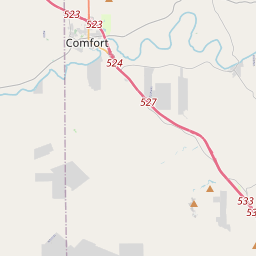Apelt Armadillo Farm
Historical marker location:






In the late 1890s, Charles Apelt (1862-1944) opened a unique commercial enterprise at this site. Apelt, a German immigrant, came to Comfort in 1887 and worked as a farmer. Here he encountered the armadillo, an animal native to the Americas, and began to develop a commercial use for the mammal’s hard shell. Utilizing the nine-banded variety (Dasypus Novemcinctus) he soon opened the Armadillo Basket Factory.
The novelty armadillo basket was a quick success; within its first six years of operation, the Armadillo factory shipped 40,000 orders throughout the U.S. and the world. In 1904, Apelt displayed his product at the St. Louis World’s Fair, and by the 1920s, the operation employed dozens of local hunters. At its height, the establishment produced about 100 baskets each week, which sold for $2.50 each or $15 if decorated with silk, bows and beads. Apelt found additional functions for armadillo shells, using them for floor and table lamps, desk sets and smoking stands. Some armadillos were captured live and sold to zoos, pet owners and research facilities; Apelt constructed an elaborate network of concrete burrows and tunnels in front of his home to meet the high demand for armadillos in medical research.
Charles Apelt ran the farm until he died in 1944. His wife, Martha, continued to run the business, which closed when she died in 1947. The farm reopened in 1951 before again closing in 1971. During its years of operation, the farm was a significant source of employment in the area. Although it is no longer in operation, Apelt Armadillo Farm continues to be remembered for its production of distinctive and famed souvenirs.
(2009)
As one of the most visible programs of the Texas Historical Commission (THC), historical markers commemorate diverse topics in Texas history, including: the history and architecture of houses, commercial and public buildings, religious congregations, and military sites; events that changed the course of local and state history; and individuals who have made lasting contributions to the state, community organizations, and businesses.
Texas was once a part of Mexico but gained independence in 1836 after a famous battle at the Alamo.
In 1845, Texas became the 28th state of the United States, and Kerr County was officially formed in 1856. It was named after James Kerr, a major in the Texas Revolution and a member of the Republic of Texas Congress. The county's early economy was centered around agriculture, with ranching, farming, and timber production being the main industries.
During the Civil War, Kerr County, like many other parts of Texas, was divided in allegiance between the Union and the Confederacy. The area experienced occasional raids and skirmishes, but overall remained relatively peaceful during the conflict. After the war, the county began to recover and flourish economically, with the arrival of the railroad in 1887, which improved transportation and access to markets.
The 20th century brought further growth and development to Kerr County. The discovery of oil in the nearby counties stimulated the economy, and Kerrville, the county seat, became a regional hub for commerce and services. The establishment of Schreiner Institute, now Schreiner University, in 1923, brought higher education opportunities to the area. Today, Kerr County continues to attract residents and visitors with its natural beauty, historical landmarks, and vibrant community life.
Kerr County Timeline
This timeline provides a concise overview of the key events in the history of Kerr County, Texas.
- 1856 - Kerr County is officially established on January 26.
- 1857 - The first county government is organized in October.
- 1870 - The city of Kerrville is founded as a trade center for the surrounding area.
- 1876 - Kerrville becomes the county seat of Kerr County.
- 1888 - The San Antonio and Aransas Pass Railway reaches Kerrville, stimulating growth in the area.
- 1890 - Kerrville is incorporated as a city.
- 1930 - The Camp Meeting Association of the Methodist Episcopal Church South establishes a permanent site for summer encampments in Kerrville, which later becomes the Mo-Ranch conference center.
- 1962 - The Kerrville Folk Festival is first held, becoming one of the longest continuously running music festivals in the United States.
- 1998 - The Kerrville-Schreiner State Park is opened to the public.